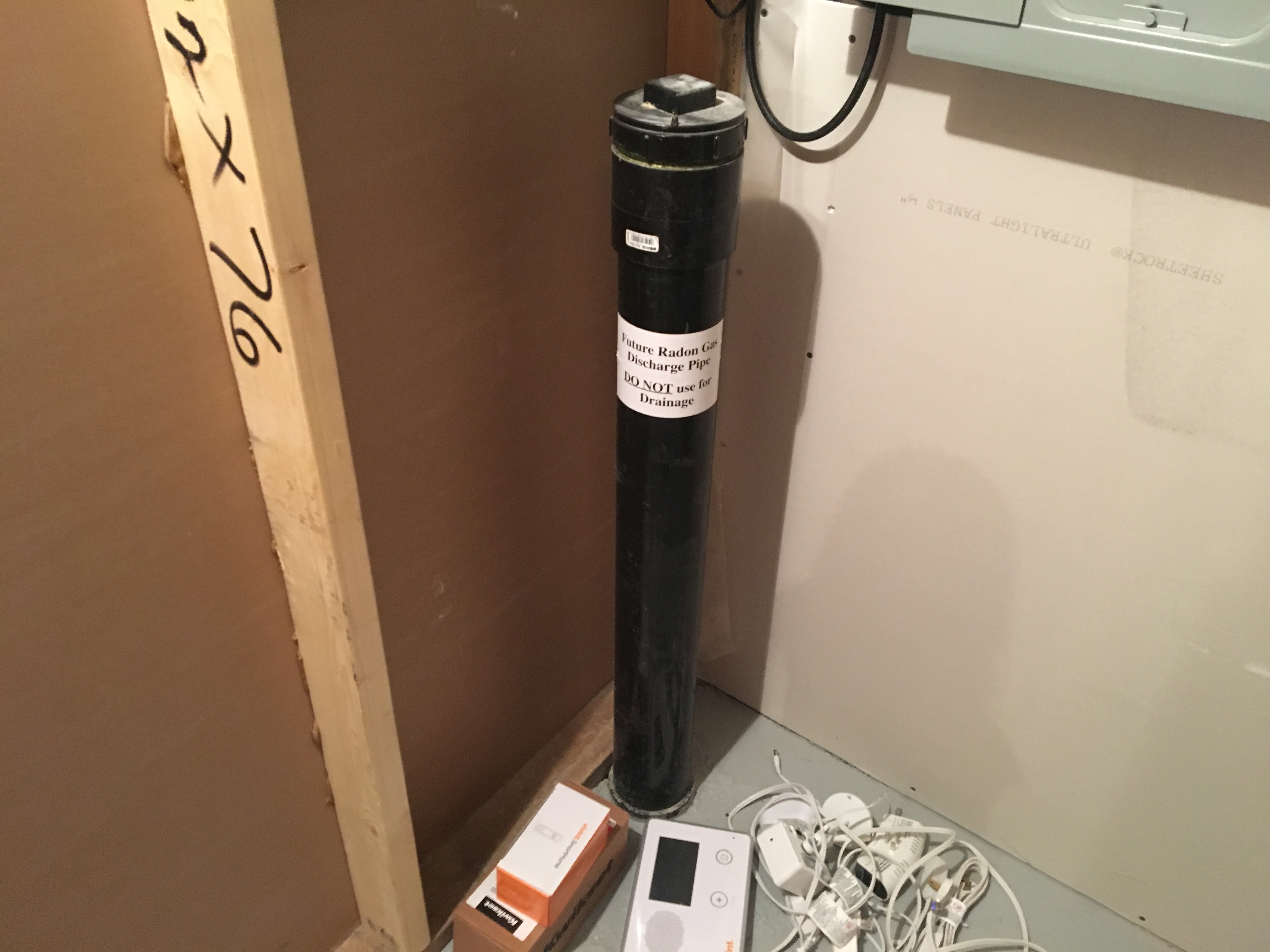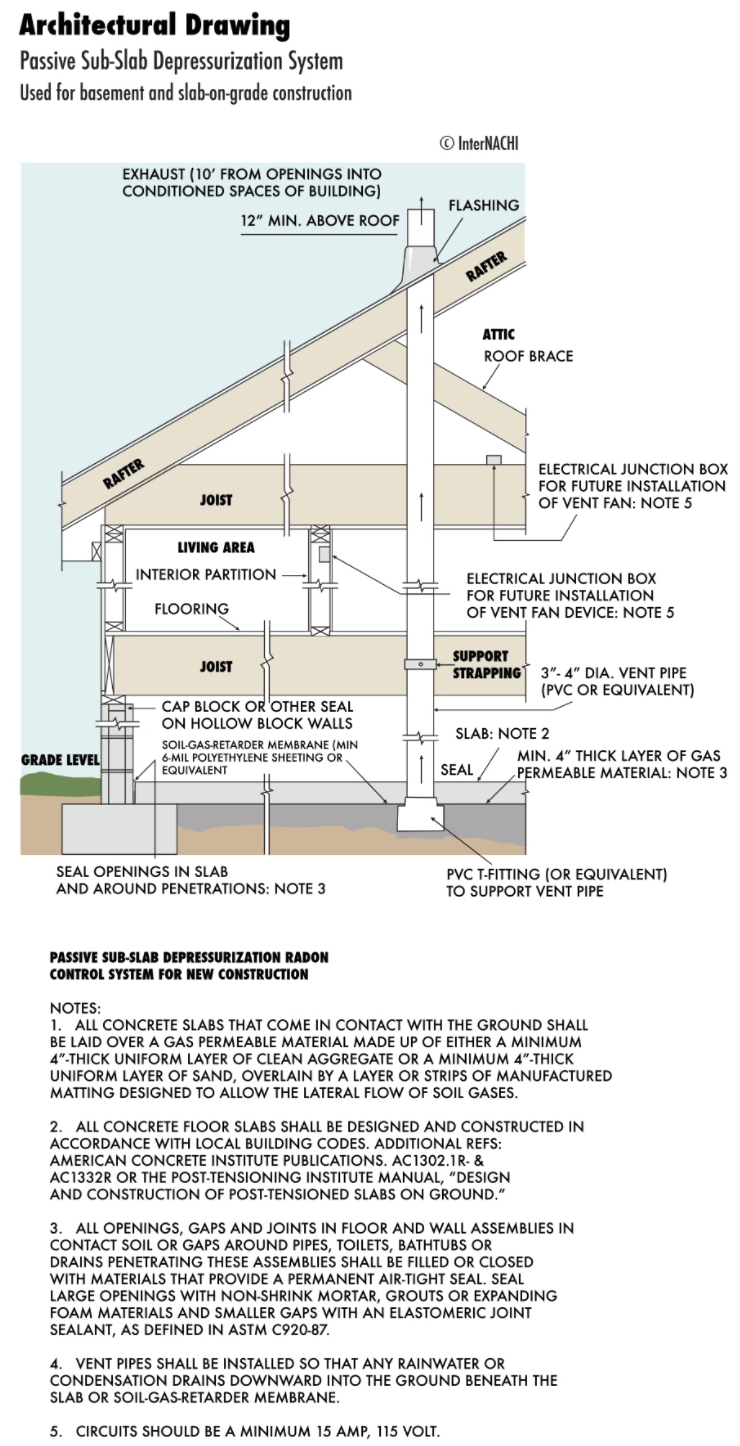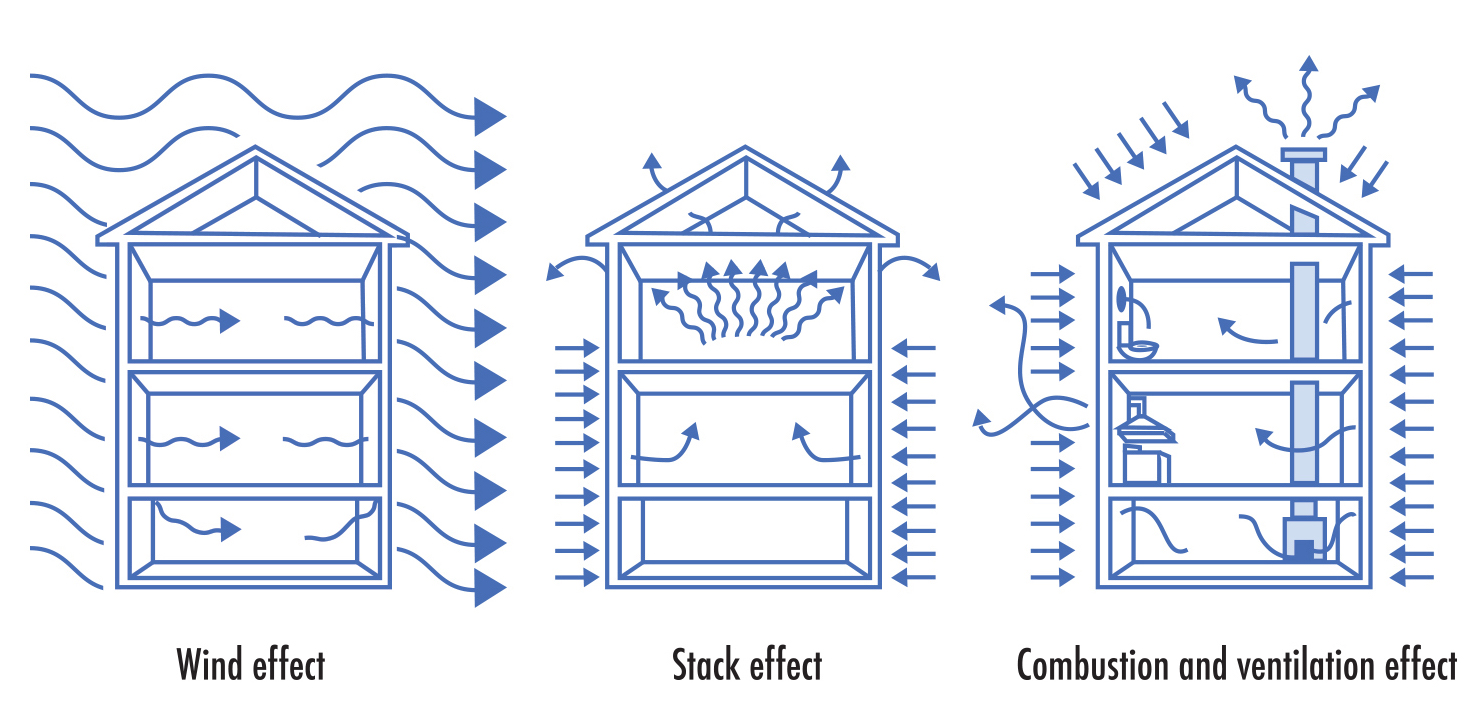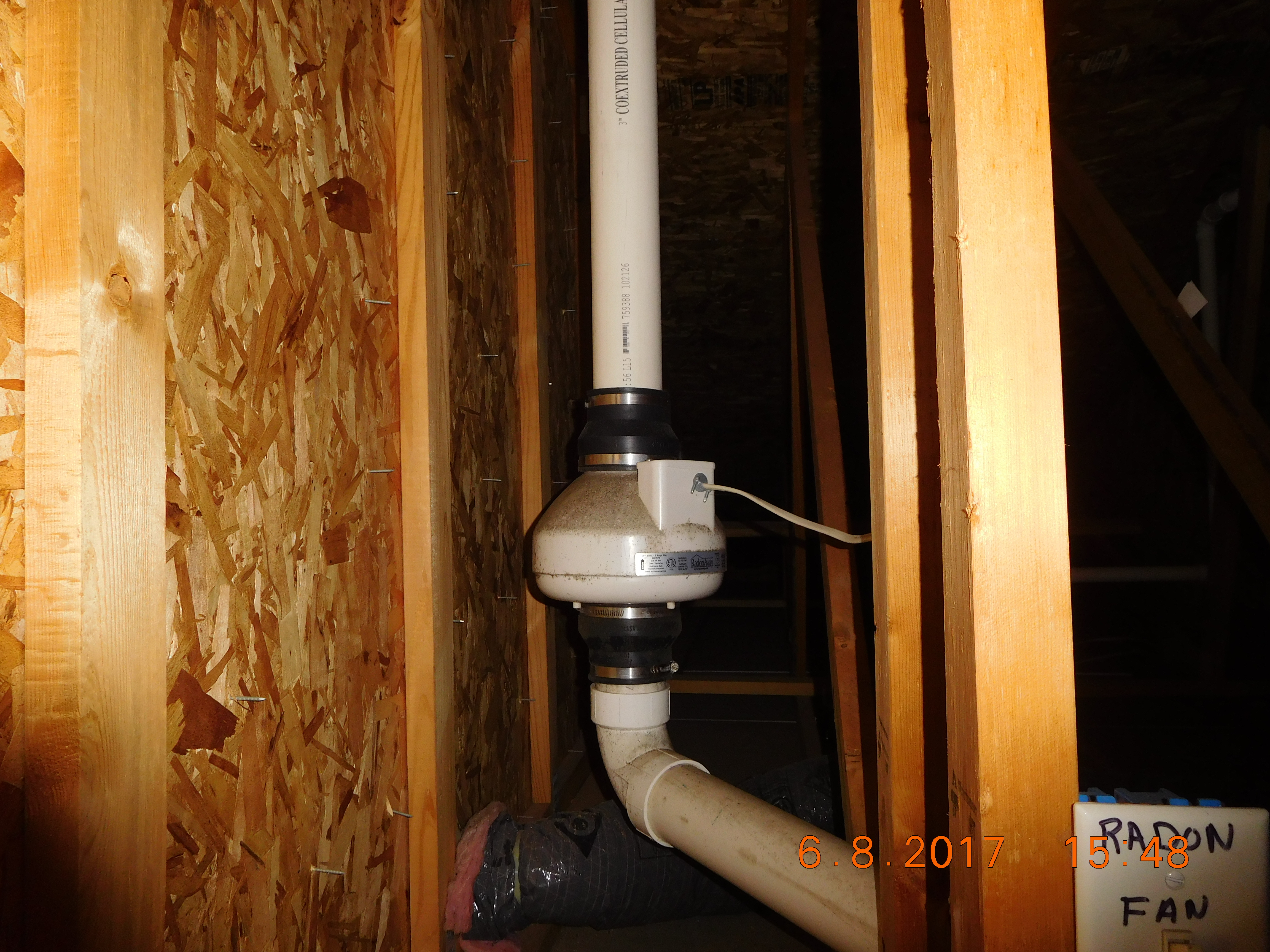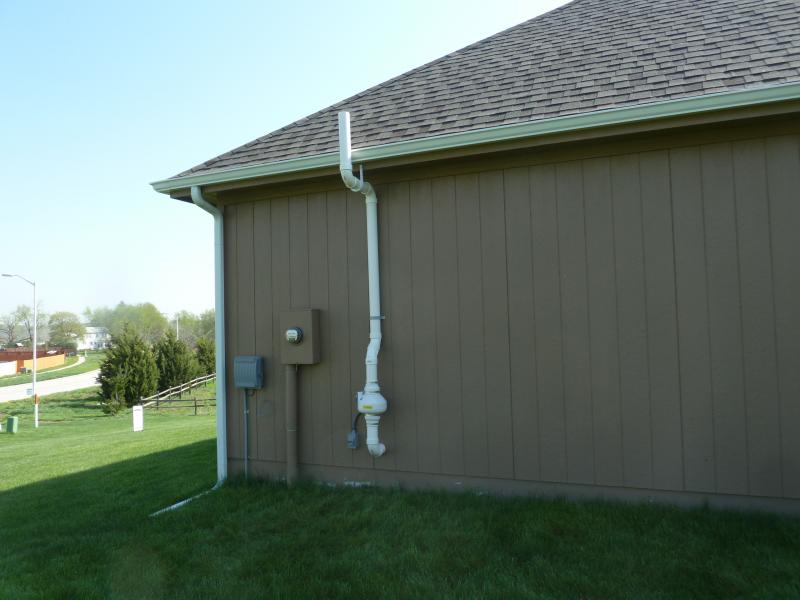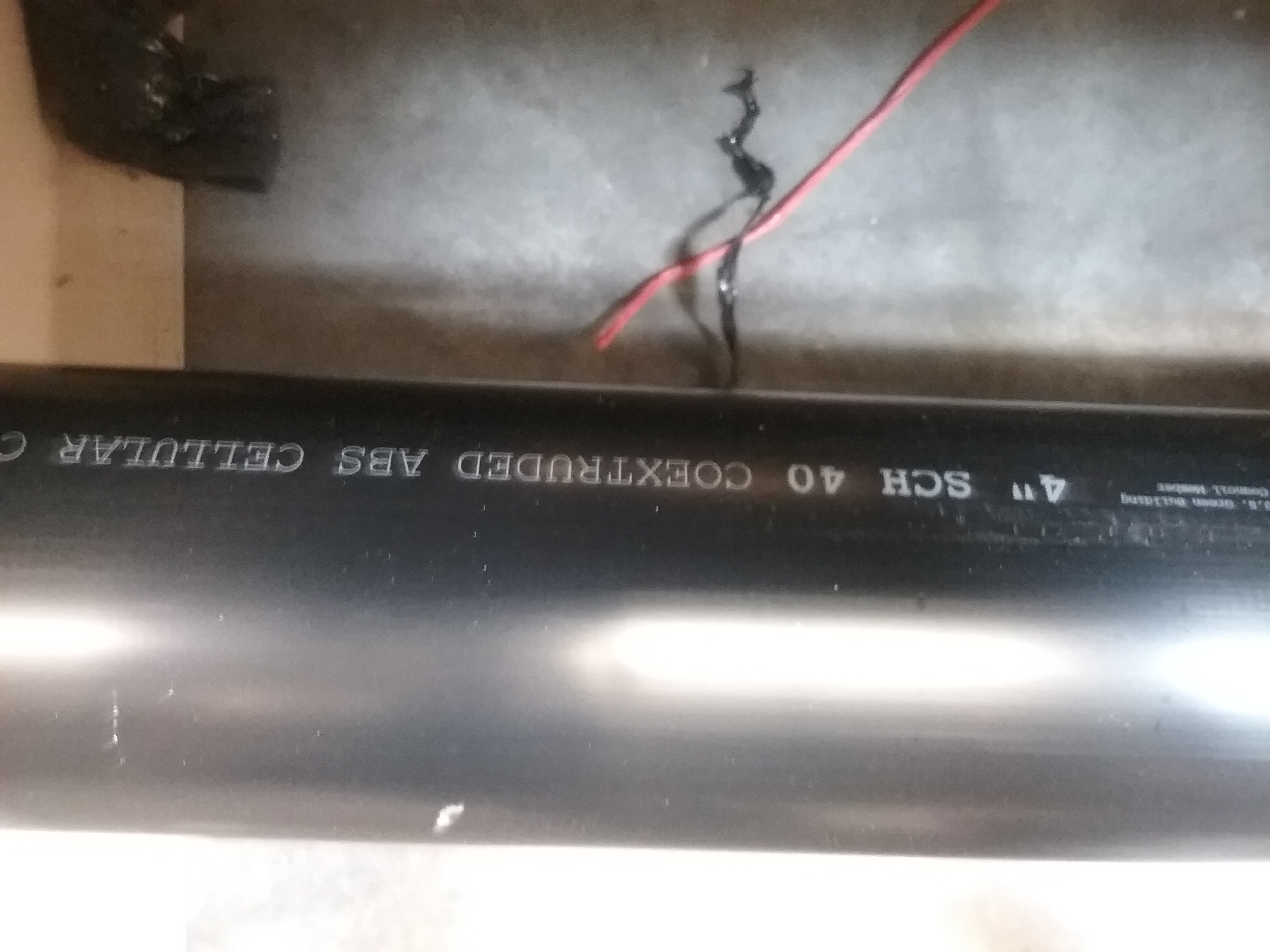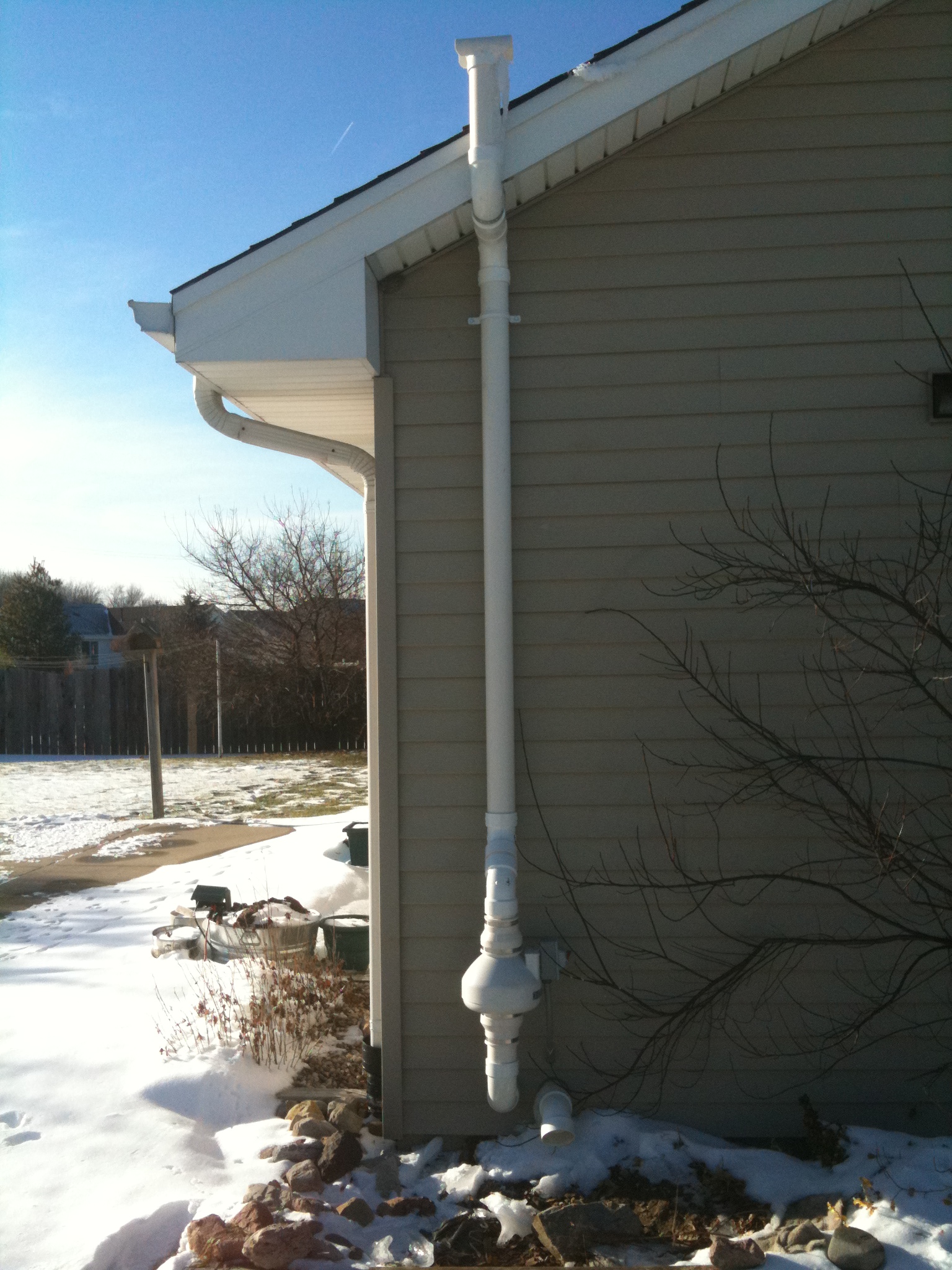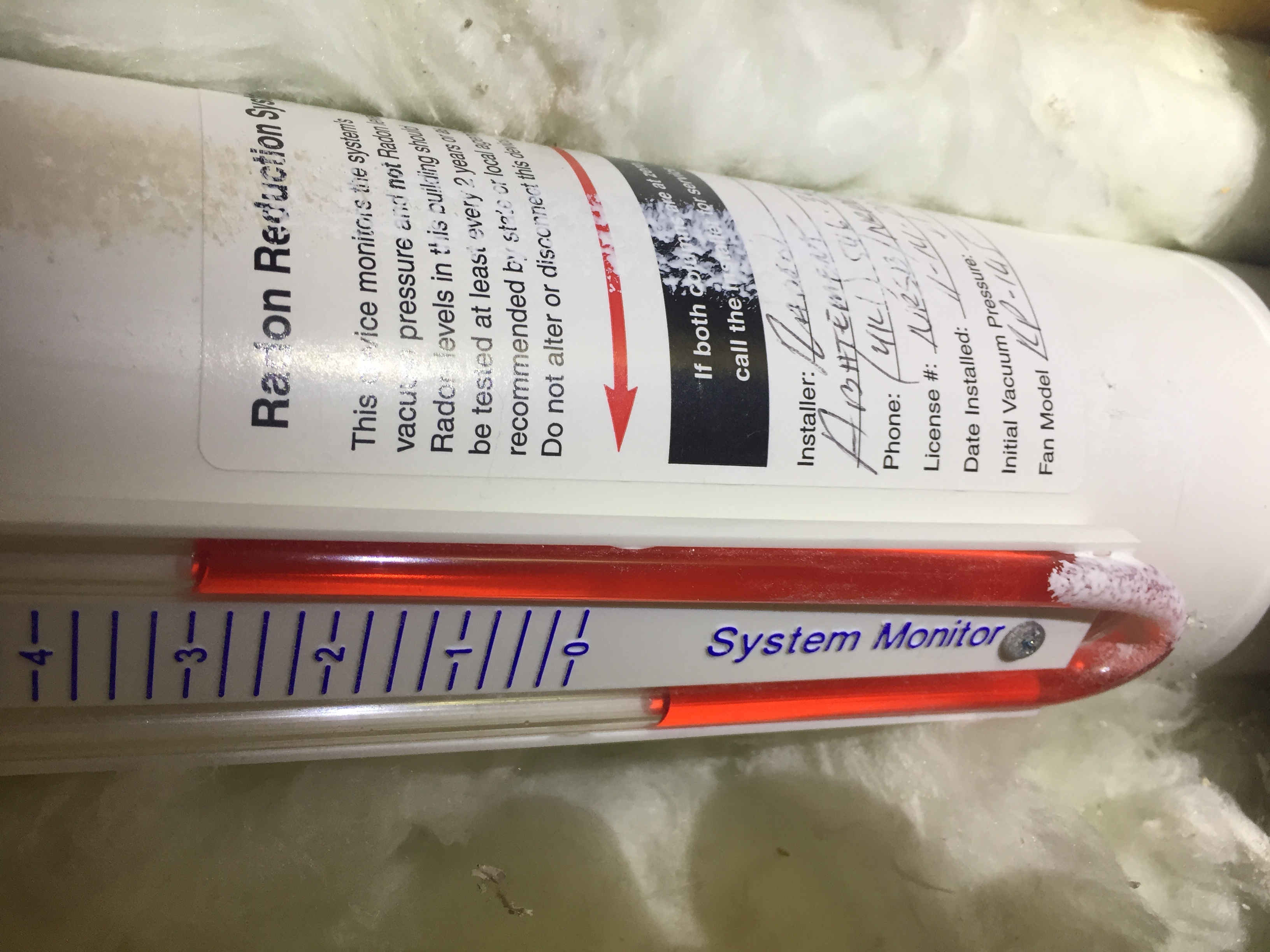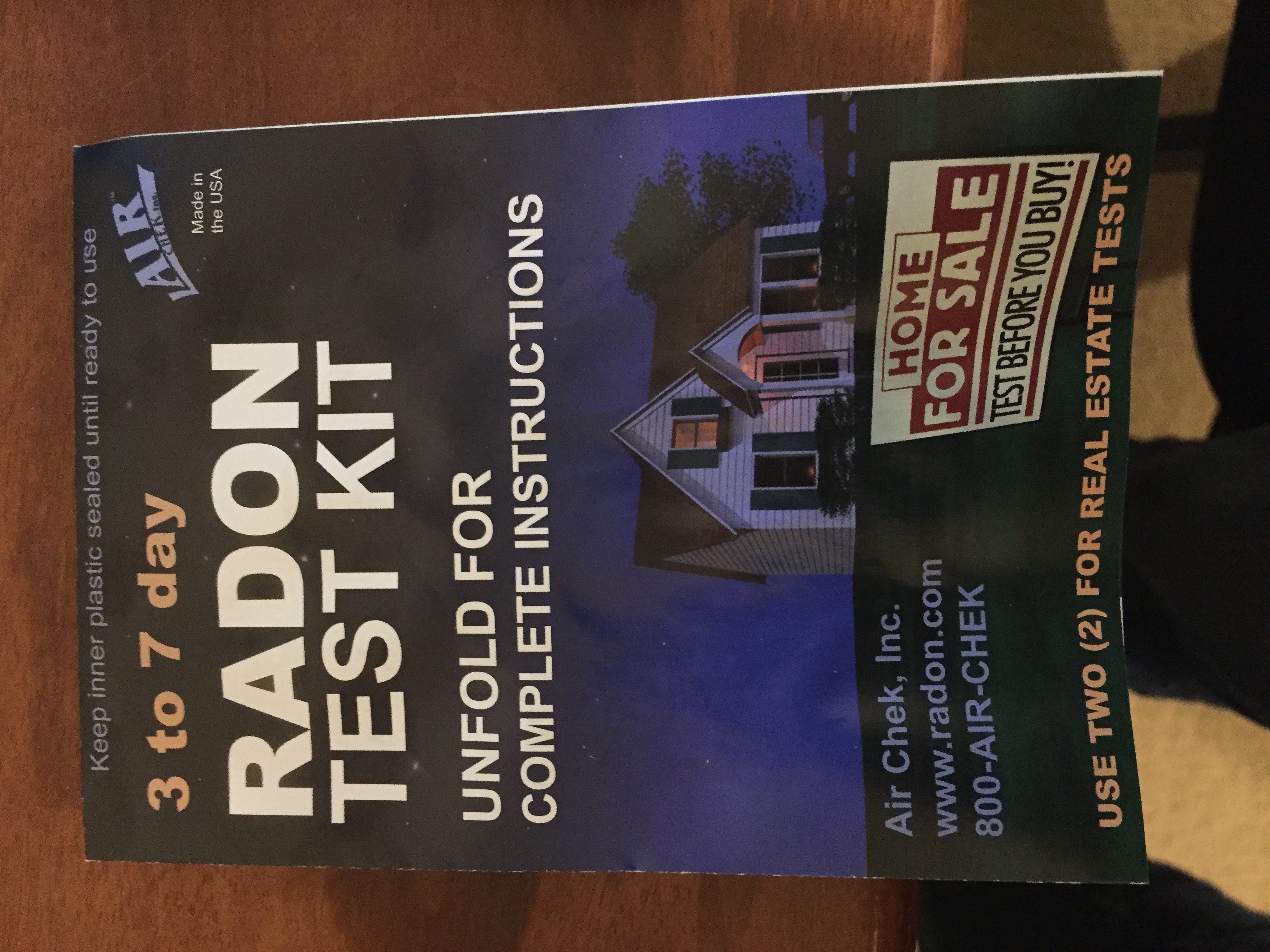Radon is a potentially deadly gas that has been proven to cause lung cancer when expose over time. You cannot see, smell or taste radon it is undetectable unless tested for. The EPA recommends every home 3 stories or under is tested.
I have worked for a new home builder for the past 10 years, for the past 2 we have been installing a radon vent pipe. the rough in pipe the runs to the centre of the basement and is then capped and labeled in the furnace room. Along with this there is 3-4" of gravel, 6 mil poly that is sealed at the joints, 3" of concrete that is sealed at every joint and penetration. I also recommend to every costumer, even though we are sealing the floor they should have their home tested.
The picture shows a passive sub slab depressurization system that is designed to reduce pressure beneath the homes concrete slab to prevent radon gas from being vacuumed into house due to houses lesser pressure than pressure beneath slab of house.
I have learned from the picture of Shiplap Siding that it can be double nailed for siding boards 8 inch or wider. In addition when installing this type of siding it must penetrate at least one inch into solid wood. Also there must be a gap left at siding joints to accomodate expansion.
The passive sub slab depressurizing system decreases the air pressure under the concrete slab in any type of construction. To accomplish this, the system is placed under the slab, them sealed with a layer of sheeting at least 6 mil in thickness. The system then carries air containing radon through plastic pipes or tubing to be vented outdoors.
Radon is a gas produced by the radioactive decay of the element radium. Radon decay products can attach the the lung tissue causing cancer. Radon is the second leading cause of lung cancer. 15% of homes in the united states have levels of radon requiring treatment or mitigation to reduce exposure.
Air pressure in a home is the natural phenomenon that can pull radon from the exposed soil up through the home and out the ventilation points of the building envelope. This natural flow of air can result in radon exposure and the health risks associated.
Damage Caused by Radon, effectively comes from the byproducts of the radioactive decay of radon. These products, if inhaled can cause lasting damage to the sensitive parts of breathing system- becoming the second leading cause of lung cancer in the United States.
I writing an essay for the Illinois Advanced Radon Measurement Service Provider course.
Upon inspecting a two-story colonial home with a full basement, I observed the radon mitigation system. The Vacuum monitor located in the basement on the system vent pipe was indicating that the vacuum pressure was adequate at the time of the inspection. This monitor also had an installer name and date attached to it.
Radon mitigation Systems fan was installed in the garage attic space, hiding the radon system from view and offering better protection from the freezing and thaw cycle outdoors. The fan was operating at time of the inspection. The radon mitigation system vent pipe was routed vertically through the garage to the attic space above and terminated outside the roof and was over ten feet away from any windows, doors or chimneys
The EPA has found that Radon gasses exist all over the country and that it is highly recommended to have a radon test performed on any home new or old. If you are purchasing a home it is advisable to have a professional radon measurement/test preformed. Depending on the test results you may want to have a radon mitigation system installed to clear potential harmful radon.
This is a picture of a radon mitigation system from the outside. It appears to be installed correctly and has a fan to push the gases up the vertical pipe. This system help to create a vacuum and push the gases out above the house.
I chose to read about inspecting blown in added insulation. I learned that you must have proper sealant installed in the ceiling and around ventilation going into the attic. I also learned that a ventilated attic is superior to an unventilated attic in getting rid of any moisture that forms, if a ventilated attic doesn’t have proper insulation, in the winter it can cause the attic to heat up and melt snow on the roof causing ice dams.
The photo shows 4 inch diameter schedule 40 ABS piping. 4 inch schedule 40 ABS or PVC piping is the recommended material for constructing radon mitigation systems. 3 inch ABS or PVC piping is the minimum required for radon mitigation systems.
I studied the article “Radon.” The article was a brief overview of what radon gas is, how it can be harmful, how to test for radon, and how to mitigate radon. Radon levels outside average 0.4 pCi/L and indoor radon levels average 1.4 pCi/L. The EPA recommended action level for radon is 4.0 pCi/L or greater.
I starting a mitigation company to insure that my employees will be busy during the winter as well. The way I see it, the more services I provide the better off I will be. This was my little essay ( :
I have already done several radon courses in the past. But after six years in the business, you realize that you will forget the information you have learned. My inspectors are constantly being trained by me, but doing this course makes me realize that there are other areas that need attention.
It is important to inform clients and provide them with information about radon. Many clients will not understand that even if a test has been preformed that more testing may be advisable. In cases where previous testing was done a few years prior, remodeling or construction has taken place, or where a test was performed that was not in the lowest level the client now wishes to use.
I have attached a picture of a vacuum gauge on a radon mitigation system. The sticker placed by the installer indicated the initial pressure was at level one. I noted the current pressure was at 3 and was fluctuating slightly along with noises of water gurgling. It is important to inspect in place systems and educate clients about how to monitor conditions. I
The attached diagram explains a passive sub-slab depressurization system. A 4-inch coarse gravel is placed beneath the slab and Polyethylene sheeting is kept on top of the coarse gravel. A 4-inch PVC runs from the Gas-Permeable layer through the home to the roof. Seal and Caulk all openings in the foundation. An electric junction box is installed in the attic to install an active system.
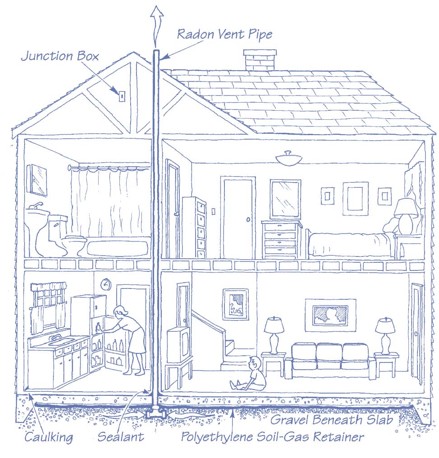
I performed a DIY Radon Test on my home.
The test kit was deployed in a living space near an A/C duct
Closed house conditions due to Summer Heat
Two Day test with closed house conditions > 12 hours before.
I sent the test kit back to vendor and received results in 2 weeks
Test Number: 8547107 Result: 2.0 pCi/l
This test was received for analysis on 07/29/2017
The total exposure time was 73 hours
Starting on 07/21/2017 at 1:00 pm
Ending on 07/24/2017 at 2:00 pm
I plan to integrate Radon Testing into my business ASAP using the AirThings Corentium Pro
https://airthings.com/pro/
I plan to retest my home at least every two years.
